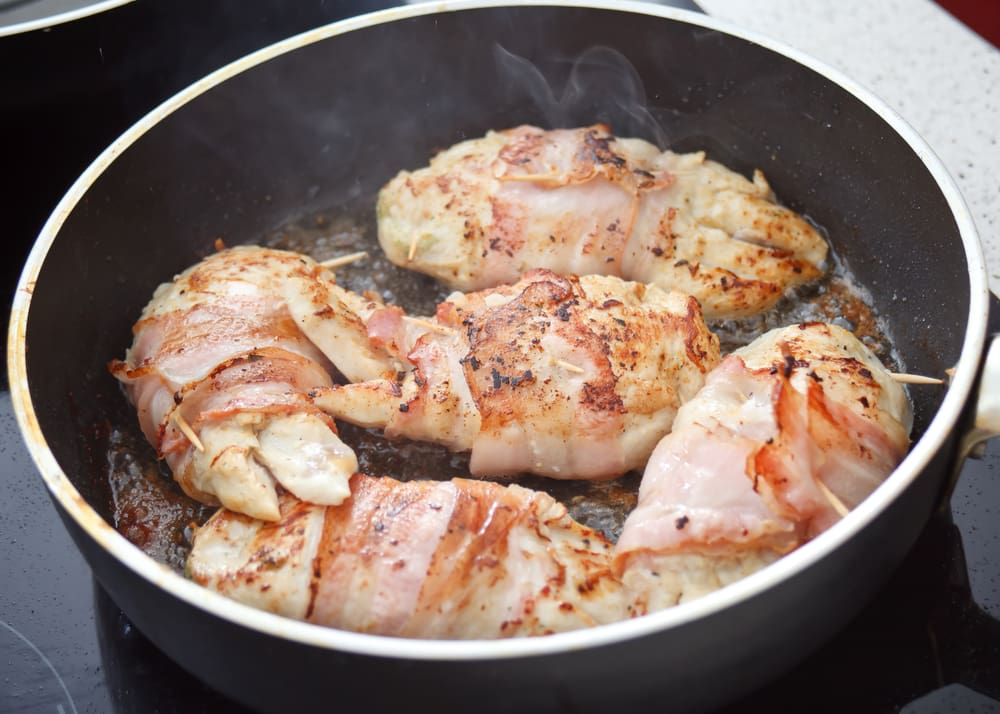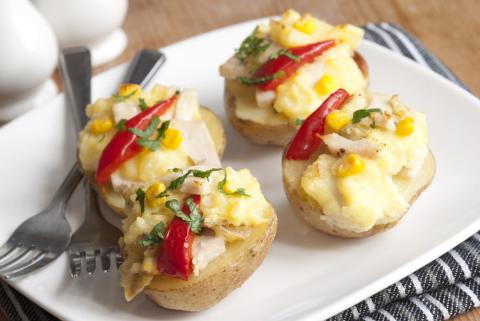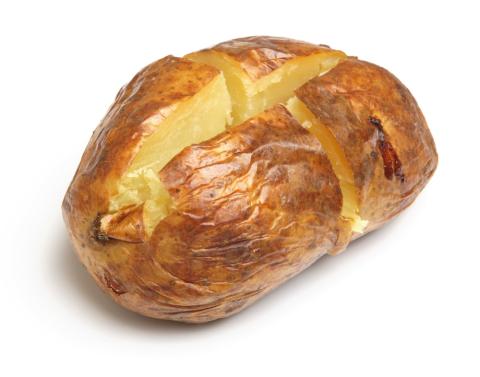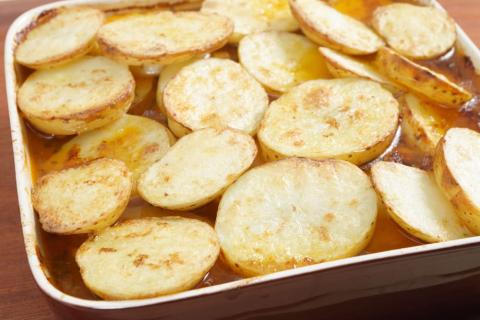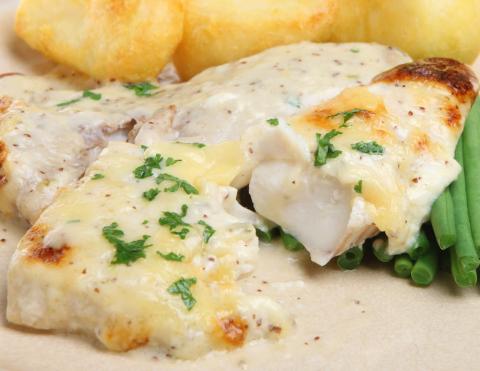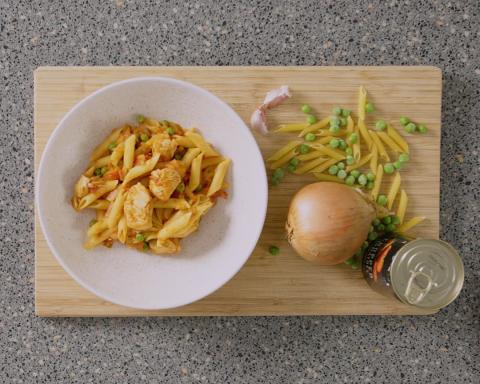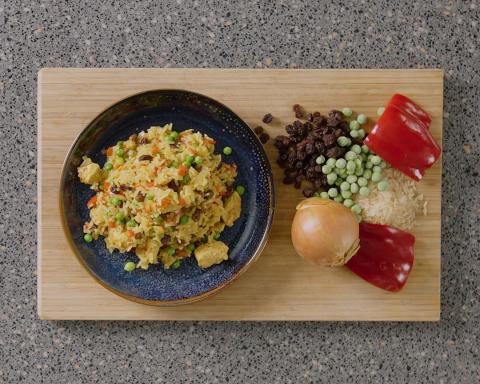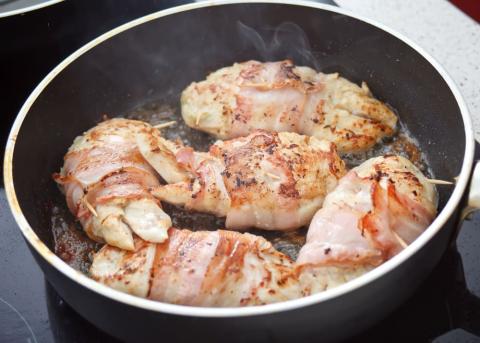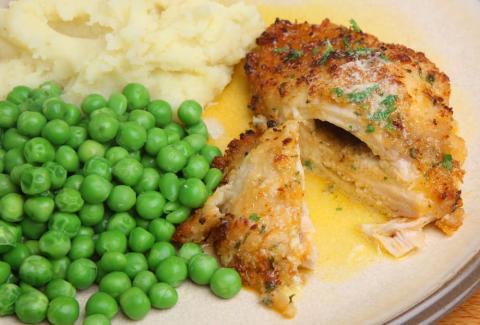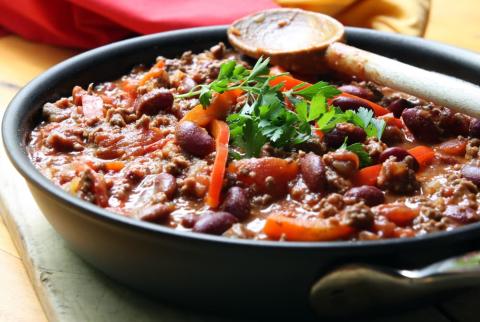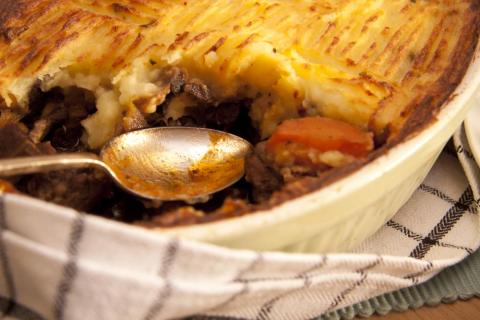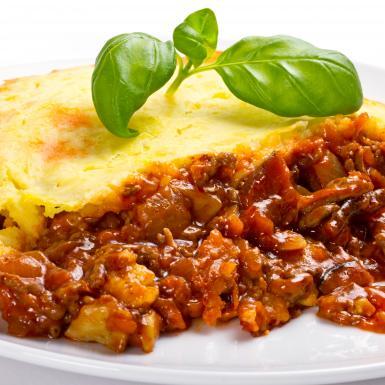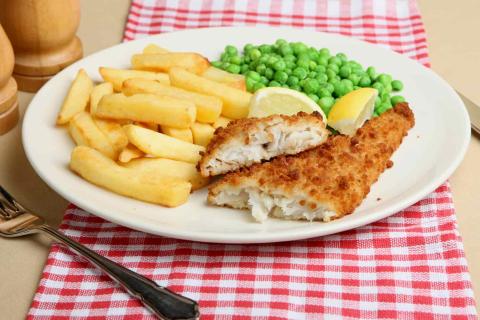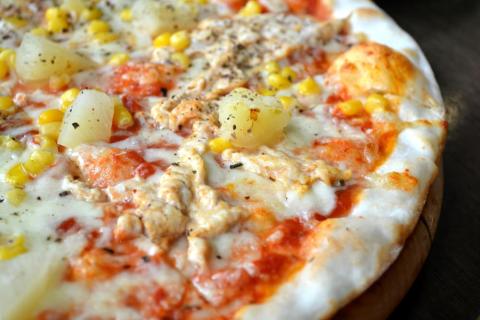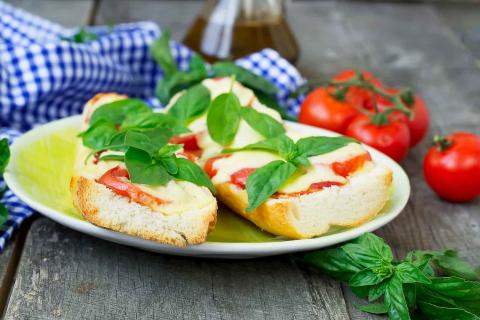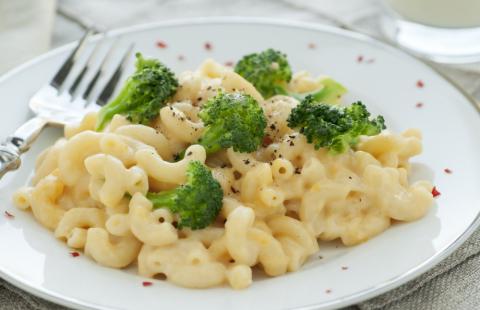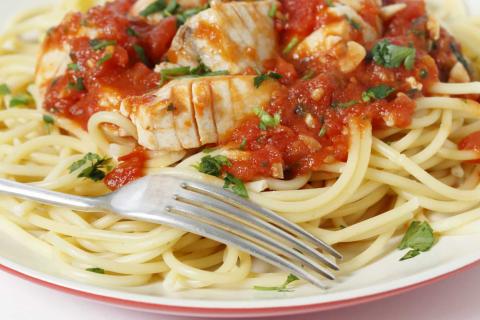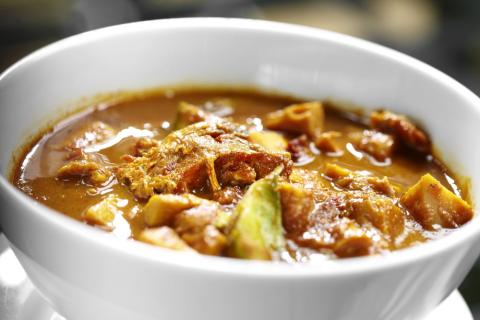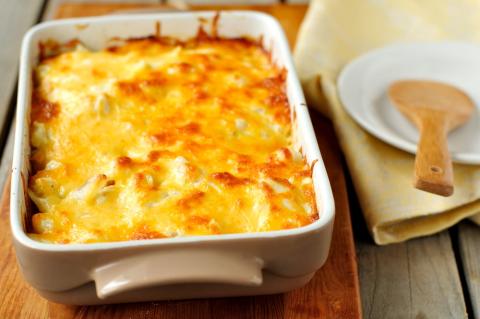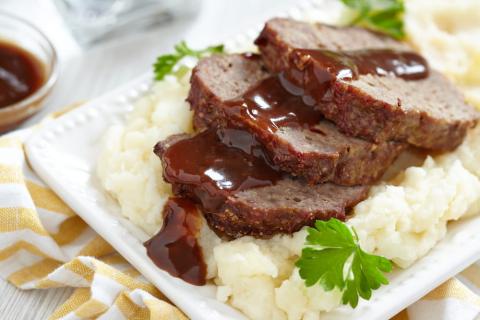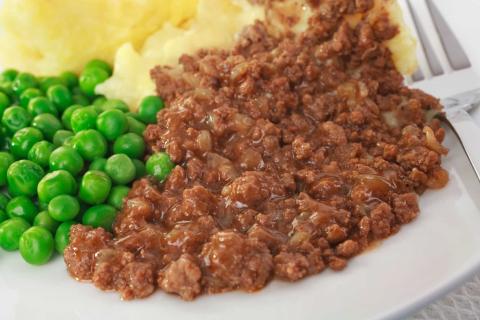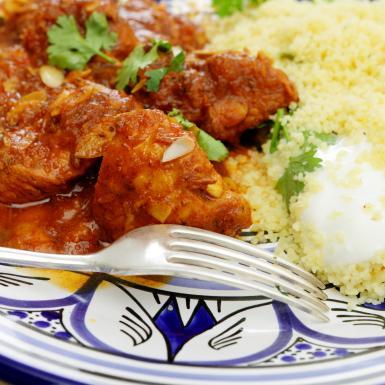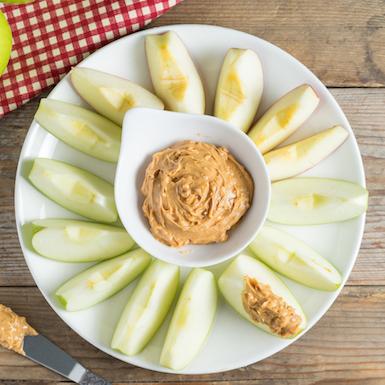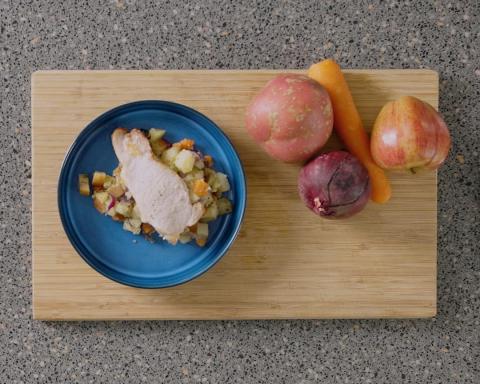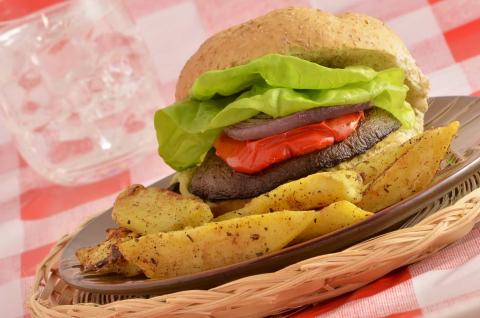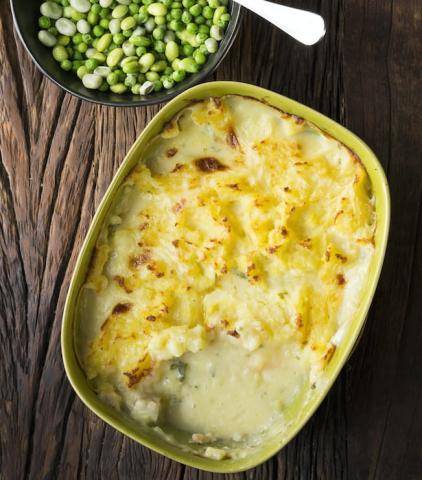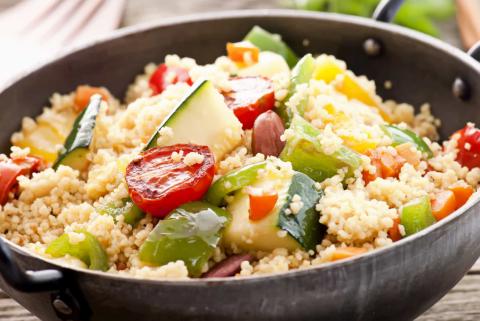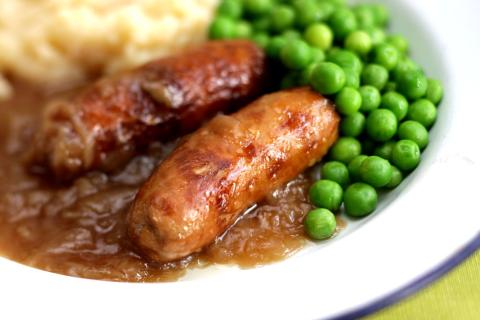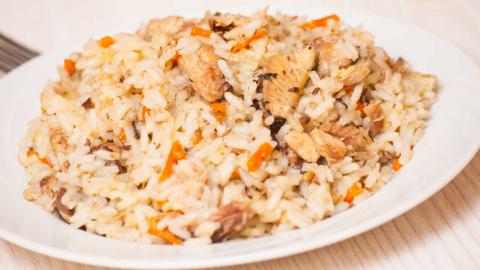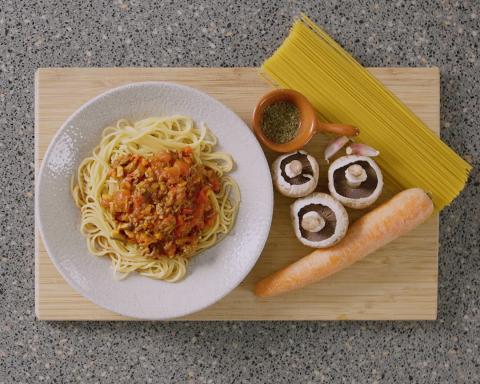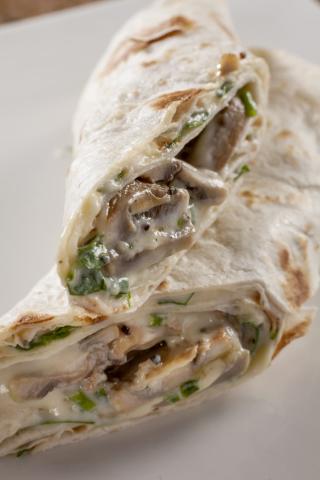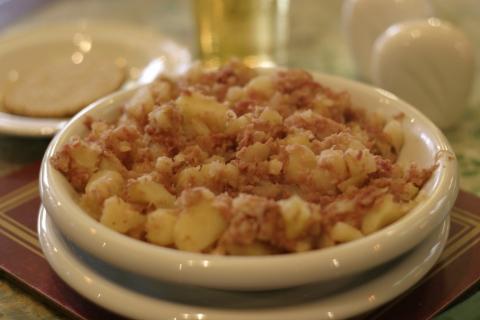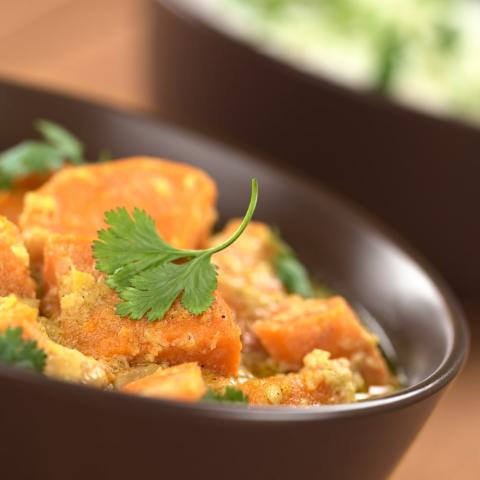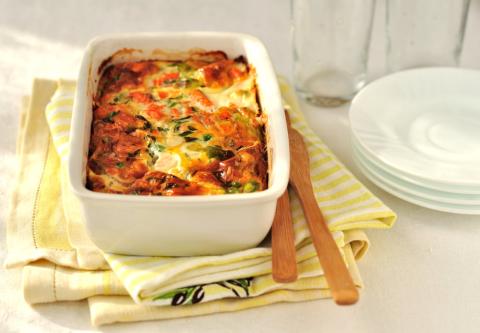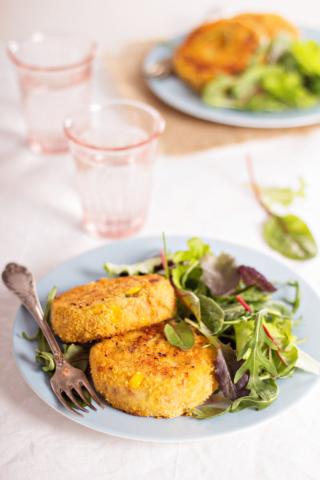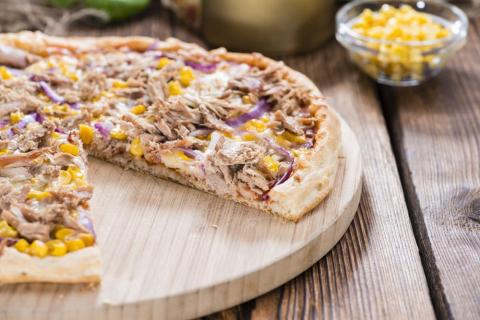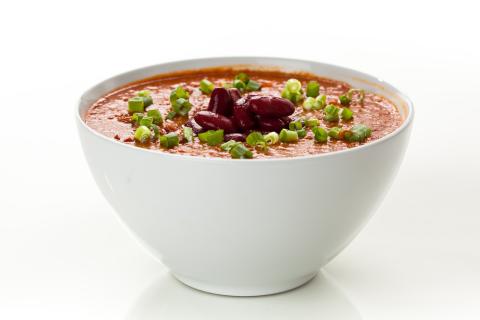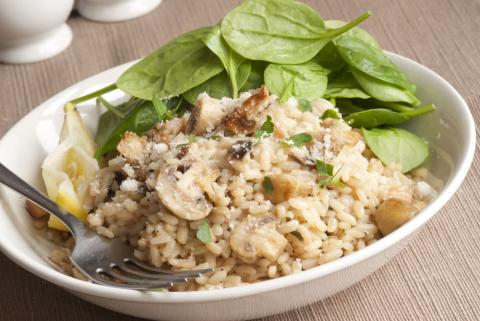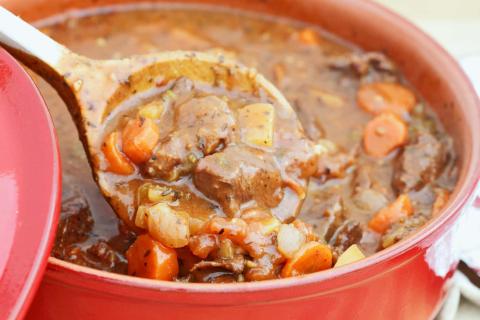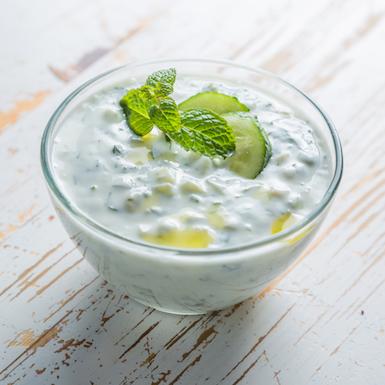- 4 (600g) Chicken Breasts
- 2 Teaspoons (10g) Low Fat Spread
- 4 (12g) Garlic Cloves
- 2 Teaspoons (2g) Basil
- 4 Rashers (100g) Smoked Back Bacon
- 2 Teaspoons (20g) Vegetable Oil
- 8 Spears (360g) Broccoli
- 18 (720g) New Potatoes
Ingredients
Allergy Disclaimer
Always check the label of each ingredient for allergy warnings.
Method
- Peel and finely chop the garlic.
- Make a paste with the low fat spread, garlic and basil.
- Slit each chicken breast horizontally to make a pocket and fill each pocket with a quarter of the paste.
- Trim the fat off the bacon and wrap each breast in one rasher. Hold together with cocktail sticks if you need to.
- Fry the chicken parcels in oil in a pan with a lid until the bacon crisps. Then put the lid on and simmer for 20 minutes. Alternatively, you can bake the chicken parcels in the oven for 20 minutes at 180°C / 350°F / 160°C fan oven / gas mark 4.
- Wash the new potatoes, cut them in half and add them to a pan of boiling water. Simmer for around 15 minutes until tender.
- Rinse the broccoli and cut into small pieces. Cook in a pan of boiling water for 4-5 minutes until tender.
- Serve the chicken Kiev hot with the broccoli and new potatoes.
Time Saver Tips
The broccoli can be cooked in the same pan as the new potatoes for the last 5 minutes of cooking time, which saves washing another pan!
Cost Saver Tips
Don't let any leftover veggies go to waste – serve them with the chicken Kiev.
Tips for Kids
Let the kids get involved – ask them to help stick the cocktail sticks into the Kiev to hold the chicken and bacon together. You can then serve it with their favourite vegetables.
Nutritional Information
Based on a single serving of 426g (% of an adult's reference intake)
Energy
401 kcals ( 20 %)
1,689 kJ ( 20 %)
Fat
2.2 g ( 11 %)
Saturates
26.7 g ( %)
Sugar
2.6 g ( 3 %)
Salt
1.2 g ( 20 %)
Detailed nutritional information
| Per 100g | Per 426g serving | |
|---|---|---|
| Energy Kcals | 94 | 401 |
| Energy Kj | 397 | 1,689 |
| Protein | 10.9 g | 46.5 g |
| Total Fat | g | g |
| Saturated Fat | 0.5 g | 2.2 g |
| Carbohydrates | 6.3 g | 26.7 g |
| Total Sugars | 0.6 g | 2.6 g |
| NSP Fibre | 1.2 g | 5.1 g |
| Sodium | 111 mg | 473 mg |
| Salt | 0.3 g | 1.2 g |
Find out about nutritional labelling
Nutrition labels on the front of packaging
- Most of the big supermarkets and many food manufacturers display nutritional information on the front of pre-packed food.
- Front of pack nutrition labels provide information on the number of grams of fat, saturated fat, sugars and salt and the amount of energy (in kJ and kcal) in a serving or portion of a recipe.
- The labels also include information about reference intakes (expressed as a percentage) which are guidelines about the approximate amount of particular nutrients and energy required for a healthy diet.
- The colour coding tells you at a glance if the food has high (red), medium (amber) or low (green) amounts of fat, saturated fat, sugars and salt.
- The more greens on the label, the healthier the choice
- Amber means neither high nor low, so you can eat foods with all or mostly ambers on the label most of the time.
- Reds on the label means the food is high in that nutrient and these are the foods we should cut down on. Try to eat these foods less often and in small amounts.
Food shopping tips
If you’re trying to decide which product to choose, check to see if there's a nutrition label on the front of the pack. This will help you to quickly assess how your choices stack up. You will often find a mixture of red, amber and green colour coding for the nutrients. So when you're choosing between similar products, try to go for more greens and ambers and fewer reds if you want to make a healthier choice.
 Activities & Play
Activities & Play Behaviour
Behaviour Childcare
Childcare Development & Growing Up
Development & Growing Up Family, Friends & Relationships
Family, Friends & Relationships Feeding Your Baby
Feeding Your Baby Food & Eating
Food & Eating Health & Safety
Health & Safety Mental Health & Wellbeing
Mental Health & Wellbeing Money & Work
Money & Work Online Behaviour & Safety
Online Behaviour & Safety Pregnancy & First Days
Pregnancy & First Days School & Education
School & Education Sleep
Sleep

